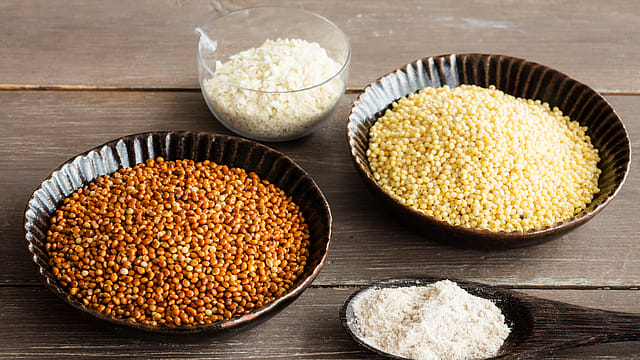Millet push: Area under cultivation up 38% in a year
ADVERTISEMENT

Government's push towards increasing millet cultivation seems to be working well as the area covered under coarse cereals has grown 37.92% to 1.85 million hectares during the current kharif season (as on June 23) as against 1.34 million hectares coverage by the same time last year.
The growth has primarily come from the additional area that has come under bajra (pearl millet) – a 333% increase from 0.23 million hectares sown by this time last year to 0.98 million hectares by June 23, this year. Area under ragi (finger millet) grew 11% to 0.03 million hectares from 0.02 million hectares during the same time last year. Meanwhile, area under maize, another major coarse cereal, decreased 22.39 % to 0.76 million hectares from 0.98 million hectares sown by the same time last year.
This year (2023) is being celebrated as the International Year of Millets (IYM).
The area under cultivation of millets has grown from12.29 million hectares in 2013-14 to 15.48 million hectares in 2021-22. The country is the largest producer and second-largest exporter of millets in the world. However, there had been a steady decline in area under millets in the country from about 34 million hectares in the late-1970s to about 13 million hectares in the recent years. The government's approach is to reverse this trend.
Meawhile, the weekly area coverage under kharif crops data of the agriculture ministry showed that the delayed onset on monsoon had resulted in a 4.5% decline in overall area sown – 12.95 million hectares sown by June 23 as against 13.56 million hectares, by the corresponding period last year. The area under paddy cultivation was 34.57% less at 1.08 million hectares as against 1.65 million hectares by the same period last year. The area under cotton was down by 14.24% (2.8 million hectares coverage by June 23 as against 3.27 million hectares last year). Area under pulses grew 3.85% during this period to 0.65 million hectares from 0.63 million hectares last year. Area under oilseed cultivation was down 3.26% and covered 0.92 million hectares as compared to 0.95 million hectares last year.
December 2025
The annual Fortune 500 India list, the definitive compendium of corporate performance, is out. This year, the cumulative revenue of the Fortune 500 India companies has breached $2 trillion for the first time. Plus, find out which are the Best B-schools in India.
Sowing is expected to pick up now with the revival of monsoon and rains reaching almost all parts of the country.
